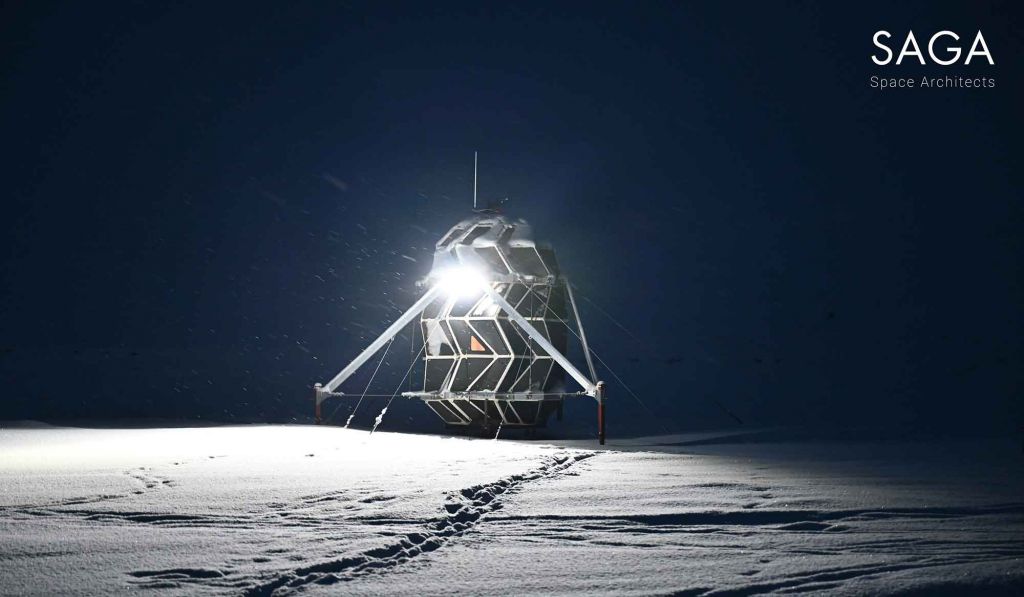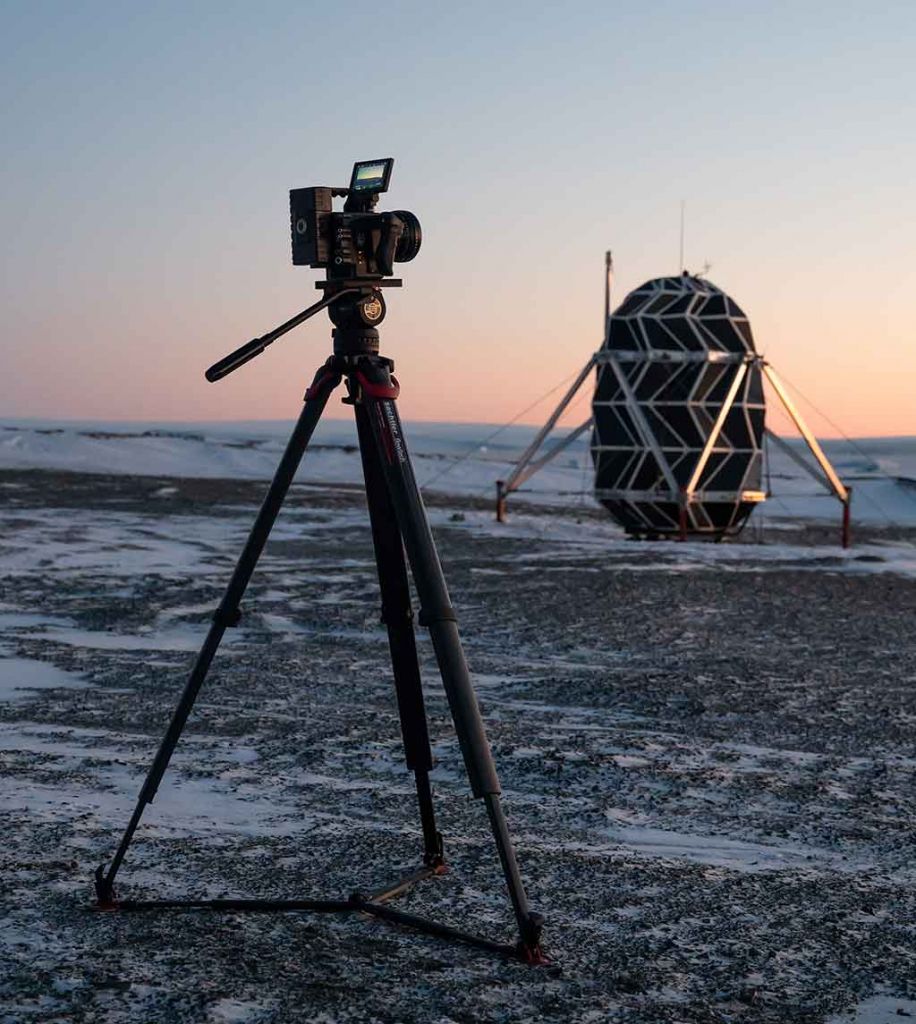Text by Leoni Fischer

August 2020: SAGA’s self-folding LUNARK habitat – envisioned for a life on the moon and carefully tailored to house the two-person crew during their three-month mission to Greenland – gets fitted into an iron shipping container and taken to sea.
Some weeks later, the Space Architects pose proudly next to their unfolded moon capsule, anchored into the uninhabited terrain of Moriusaq. This mission not only means a reality-check for their design but it also easily becomes a daring self-test, as they are trapped together inside a tiny pod, many miles away from the next base. Below the picture, it reads 1.5 years of hard work, and it’s finally happening.
For the rest of us back in civilisation, the past months have as well been marked by varying levels of social-distancing, which sometimes keeps us in the seclusion of our private homes for days. Therefore, gaining insights from the LUNARK mission and learning what design can do to maintain stability in isolation couldn’t have come at a better time.
The circadian panel proved to be incredibly powerful to sustain or improve wellbeing, says Sebastian Aristotelis. Waking up to a sunrise every day was wonderful, I personally have not slept better in many years. It truly made the habitat experience more tolerable. As soon as the sun “set” inside the habitat, my sleep hormones were so dialled in after just a few days, that I became instantly tired. If we had static light for the expedition, I think the story would have been very different. I miss it already in my apartment here in Copenhagen, so I am building one for personal use. He adds.
For Sebastian and Karl-Johann, being respectable of each other’s private life, knowing when to give the other person space, and spending time thinking and reflecting alone has proven to be the most important aspects in maintaining a positive living atmosphere. When asked about character traits or skills that were particularly helpful, Sebastian says: A funny thing that happened was that we learned to ignore the other person in a good way. Because the habitat is so small, every time one needed to do something, the other person needed to move as well. Hence, a kind of tango appeared where we knew each other’s movement so well that when one started to move, the other person would move in parallel without even thinking about it.
And there were more surprises along the way. While Karl had expected a boring three months, the duo instead turned out to be busy researching and improving the habitat. We had a Craftbot 3D printer with us so we could improvise design solutions on site. When you are away from civilisation, many daily chores need to be done. Every day we needed to chop ice from a nearby iceberg and melt it inside the habitat for drinking water.
I asked them what conclusions to draw from this exceptional adventure and what steps to take next for the two visionaries and their team. The best outcome from the mission was that the habitat worked and that Karl and I, two civilians, could not just survive but were highly functioning during the entire expedition. The habitat performed beyond our expectations; the large scale origami structure unfolds 750% which is more than satisfactory. Sebastian happily concludes.
To make the LUNARK habitat ready for production — a costly process that is quite different from making a one-off — the architects now need to optimise their design. But the SAGA crew has already set its telescopes to the final destination: It’s quite clear, we haven’t built anything on the moon yet, and that’s the goal.



The moons hostile environment makes it difficult to sustain a permanent settlement. But with the help of technological and biological supplies from the earth, the lunar soil which consists of 42% oxygen, could function as a basis to produce water, breathable air, food and construction material. SAGA’s dream to build on the moon could become a reality.
But is humanity ready for establishing a parallel society on the moon? I think. A brief look at the leaky nuclear waste storages the U.S. found on the Marshall Islands after conducting Cold War atomic testing, offers an example for the existential consequences brought to us by Solutionism – the idea that technology alone can solve any problem.
Avoiding the worlds most pressing challenges, like overpopulation or accelerating climate change, by simply conquering a ‘planet B’ seems like short-sighted action with countless ethical implications. Who would be the ones to be relocated first? What would the selection criteria be? Could children of moon settlers insist on returning to earth? What if a return would become impossible?
Our inability to handle the trash that keeps piling up in low Earth orbit renders this scenario somewhat plausible. Orbital debris circling the earth at about 8km/s makes space travel increasingly dangerous. And if there was already a colony on the moon, this junk wall might soon be separating the Moonians from the Earthians altogether. So far, there are no international space laws concerning the responsibility to clean up our orbital garbage dump.
Sacrificing ethics for innovation when designing for a life in space would be misleading. In fact, according to the feminist physicist and philosopher Karen Barad ethics is not a concern we add to the questions of matter, but rather is the very nature of what it means to matter [1].
And what does Architecture mean, if not to be a practice of mattering? Architecture can provide visionary technological solutions for construction on the moon; its ability to create spaces in which humans feel safe and comfortable weighs even more in this particular context. We are now working on maturing our studio, even more, to be able to qualify for a design contract at one of the large space agencies. Says Sebastian. It will be exciting to see how the SAGA team’s insights during their mission could lead the way towards a holistic mode of designing for the moon.






